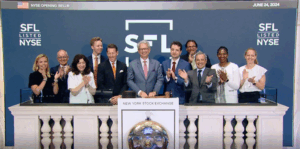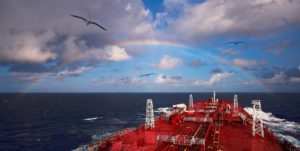
The tanker owner Hafnia Limited reported on Friday that it has sold one of its MR vessels. The shipowner revealed on its consolidated interim financial information for the Q2 and H1 2024 that on August 20 it has sold the 50,326-dwt MR vessel, Hafnia Pegasus, built in 2010, to an external party, without disclosing the price.
During the summer the shipowner has also sold one of its LR1 vessels to an external party. Specifically, Hafnia sold on July 16 the 74,999-dwt LR1 vessel, Hafnia Thames, built in 2008. The company didn’t provide any financial information about this sale.
Hafnia continues to make money in a booming product tanker market which continued in the second quarter of 2024 demonstrate strong earnings, primarily due to longer average sailing distances as vessels rerouted away from the Suez Canal to the Cape of Good Hope.
Additionally, droughts in the Panama Canal and low diesel inventories in Europe contributed to a robust second quarter.
The shipowner in the second quarter has once again delivered strong results, achieving a net profit of $259.2m, bringing its total net profit in the first half of 2024 to $478.8m.
Now the owner forecasts a positive product tanker market as demand is expected to stay strong due to longer transport distances, and the dislocation of refineries.
Even if transits across the Red Sea resume, Hafnia believes any immediate negative impact is likely to be short-lived, as market fundamentals remain strong, and consistent with 2023 levels.
“This quarter marks our best performance since the beginning of 2023 and represents the strongest first-half results in our company’s history. Our adjacent fee-generating business segments have continued to thrive in this earnings environment, contributing USD 10.7 million to our overall results in Q2,” said Mikael Skov, CEO of Hafnia.
The top management of the company, Skov, highlighted the fact that geopolitical tensions and disruptions in the Red Sea, along with continued refinery ramp-ups and dislocations, have contributed significantly to the increase in product tonne-mile demand.
At the end of the quarter, Hafnia’s fleet consisted of 117 owned vessels1 and 16 chartered-in vessels.
The Group’s total fleet includes 10 LR2s, 35 LR1s (including three bareboat-chartered in and four time-chartered in), 64 MRs of which nine are IMO II (including three bareboat chartered in and 12 time-chartered in), and 24 Handy vessels of which 18 are IMO II (including seven bareboat-chartered in).


